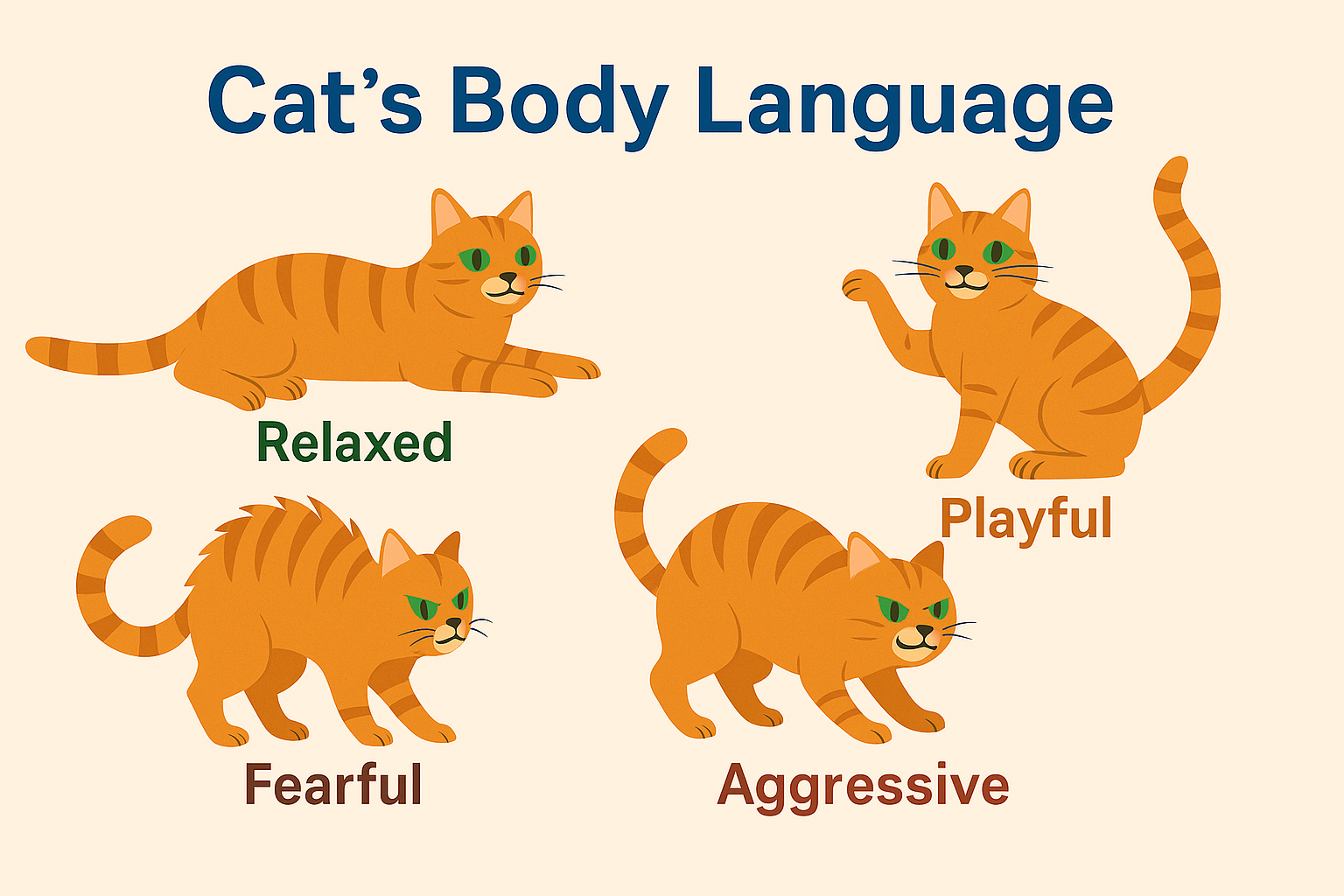The Tail Tells the Tale
If you learn nothing else about cat body language, master tail reading. The tail is your cat's emotional barometer, broadcasting their mood to anyone paying attention.
⬆️ Tail Straight Up
Meaning: Happy, confident, greeting you warmly
This is the feline equivalent of a smile. A vertical tail means your cat is pleased to see you and feeling secure.
↪️ Question Mark Tail
Meaning: Playful, friendly, curious
When the tail curves at the top like a question mark, your cat is in a good mood and possibly inviting play.
⚡ Puffed Up Tail
Meaning: Frightened, threatened
The classic Halloween cat pose. When cats feel threatened, they puff their tail to appear larger. Give them space.
〰️ Low or Tucked Tail
Meaning: Fearful, submissive, anxious
A tail held low signals insecurity or fear. Something is making them uncomfortable.
↔️ Swishing Tail
Meaning: Irritated, overstimulated
Unlike dogs, cats don't wag tails when happy. A swishing tail means "back off." This is your warning.
⤴️ Quivering Tail
Meaning: Excited, greeting ritual
When a cat's tail quivers while held upright, they're extremely excited: often seen when greeting favorite humans.
Reading the Ears
Cat ears do more than you’d think—they swivel like little radar dishes and move on their own.
Forward and Upright
This is the neutral, relaxed position. Your cat is alert and interested but calm.
Slightly to the Side (Airplane Ears)
When ears rotate outward, your cat is anxious or irritated. This is the first warning sign.
Flattened Back
This signals fear or aggression. Ears pinned completely back mean your cat is in defensive mode.
Shop Cat Calming Products →Eye Contact
Your cat can say a lot with their eyes.
Slow Blinks
This is the ultimate sign of trust: the cat equivalent of blowing a kiss. Return the gesture to strengthen your bond!
Dilated Pupils
Wide pupils can indicate excitement, fear, or aggression. Context matters here.
Body Posture
Posture pulls it all together—it’s the big picture.
Relaxed and Confident
A relaxed cat stands normally, weight evenly distributed, tail loosely curved or upright, ears forward.
Arched Back
The classic defensive posture. This cat feels threatened and is trying to appear larger.
Belly Up
This is a sign of trust and comfort, not necessarily a request for belly rubs!
Real-Life Scenario:
Your cat is lying on their back, belly exposed. You reach to pet and suddenly they grab your hand. What happened?
Translation: The exposed belly says "I feel safe," not "pet me here." Try petting the head or chin instead.
Vocalizations
Cats have a whole soundboard of ways to “talk”.
Purring
Usually contentment, but cats also purr when injured or stressed (self-soothing).
Meowing
Adult cats rarely meow at each other: this is mostly for human communication.
Hissing and Growling
Clear warnings that mean "back off." These are defensive sounds. Respect this warning.
Friendly Gestures
Head Bunting
When your cat bumps their head against you, they're marking you with scent and showing affection.
Kneading
That rhythmic pushing with alternating paws? Adult cats knead when extremely content.
Find Kneading Blankets →Respecting Your Cat's Communication
Understanding body language is only half the equation: respecting what your cat is telling you is the other half. If your cat signals discomfort, stop what you're doing.
The beauty of learning cat body language is that it transforms your relationship. Your cat has been talking to you all along; now you can finally understand them.
Explore Cat Behavior Books →